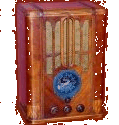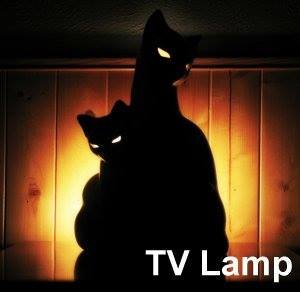|
























|
 |

The difference between a "Radio Lamp" and a "TV Lamp".
There's a difference???
 |
In the 1930s and '40s radio lamps were designed to add low light to the room in the evening as you sat and listened to a ball game, the news, or
your favorite suspense program on the radio.
Many radio lamps were illuminated globes with the occasional naked lady holding them, or other translucent objects. The glow of the low wattage bulb covered the entire room. Frequently they were set on top or next to the radio.
Radio listeners could see each other and move around the room without tripping over pets or the furniture.
|
 |
When early television appeared, TV picture tubes were not very bright. Rooms needed to be dark for better viewing. Unfortunately, staring at the TV picture in
a dark room was bad for the eyes and using a radio lamp that was as bright as the TV picture was distracting and made the TV screen harder to view.
The solution was a lamp that only allowed low levels of light to be projected onto the wall behind the TV. Usually made of ceramic in the various shapes of animals with glowing eyes, ships, shells, and other objects,
TV lamps blocked the direct light from the bulb, dimly illuminating only the wall behind the TV. In the early 1950's they took their place on the top of the television which was quickly replacing
the radio as the entertainment center of the living room.
TV lamps were often given out by stores with the purchase of a new television. Today they may be found at garage and yard sales. The next time you find a black ceramic Jaguar, check for a
cord attached to a light socket in the back.
|
|
|



